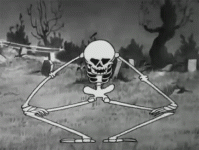John-Edmonton
Silver Member
- #1
Thread Owner



I also found a 1831 US Large Cent yesterday in a wooded area and it was on the surface covered by some leaves. I found 2 others near the same spot earlier this year and they were up to 2 inches deep. The buried ones were more toasted. My personal opinion is it depends on the soil, moisture, and if the ground has been disturbed over the years. I find most of my coins less than 5 inches deep and I've dug deeper trash as well. There's no exact science to it but it is a fun topic to debate.

